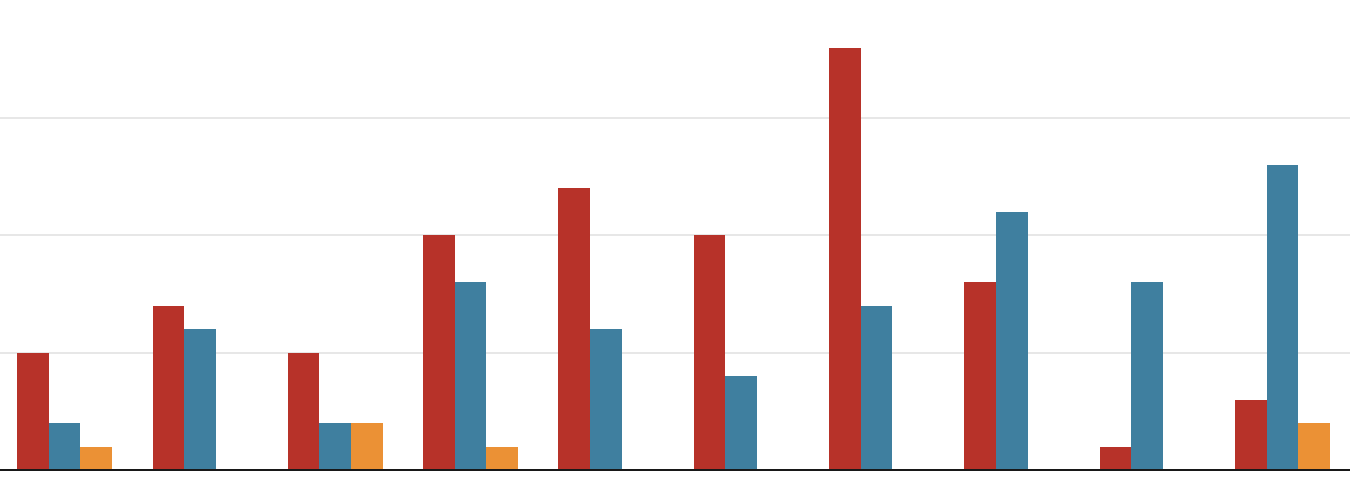In the lead up to the state election, there have been quite a few prominent MPs have announced their retirement, including a number in key marginal seats.
This prompted me to collect data on how many members have retired at each election over the past 35 years. This has been aided by Wikipedia keeping lists of retiring MPs on the pages for recent elections.
The total number of retirements is roughly in line with a number of other recent elections, but almost all of the retirements are on the Coalition side. It’s the highest rate of Coalition retirements in the period I have analysed.
For this post, I’m only looking at lower house retirements. While a number of MLCs are retiring at the election, the impact of upper house retirements is far less significant – both because you don’t have personal votes in individual electorates, and because it is much easier for upper house MPs to retire mid-term.
Members of parliament can’t stay in their seat forever and so there is a need for retirements to take place at some point – but there can be advantages in timing them well. Ultimately every MP either retires by not contesting election, or they lose their seat. The retirement of a sitting MP creates a vulnerability that can weaken a party’s hold on a seat, so there’s value in timing a change of the guard and spreading them out across different elections.
There are strong trends that suggest retirement rates go up and down with the electoral cycle. Labor's retirements peaked in 2011, when the government was widely expected to lose. Labor had 18 retirements that year, out of a total of 50 sitting MPs. There was also a relatively high number of retirements in 2015, as the previous generation stepped down at the next opportunity after losing power. But Labor only had one MP retire in 2019, and only have three retirements in 2023. This doesn't count Tania Mihailuk, who has left the party and will contest the election for One Nation.
The Coalition has 13 retirements, which is the highest level since at least 1988. The Coalition had a surprisingly high number in 2015 after one term in government, when you'd expect government MPs to stick around, particularly considering that they were expected to easily win re-election. This included a number of MPs implicated in an ICAC investigation, and former premier Barry O'Farrell.
There's also two retirements on the crossbench: former Liberal MP John Sidoti in Drummoyne, and Greens MP Jamie Parker. Parker is the first ever Greens MP in a single-member electorate to retire voluntarily in any part of Australia and that race will be a test of how much his support is reliant on a personal vote and whether this moment creates an opportunity for Labor to win back a seat that has looked safe for the Greens.
There are a handful of Coalition seats that are also worth watching. Liberal MPs are retiring in Riverstone, Parramatta, Ryde and South Coast, and the Liberal MP in Holsworthy lost preselection involuntarily. These seats are all on margins between 6.2% and 10.6%, and recent statewide polling suggests they are right in the middle of the range of swings to Labor. These may well be races where the loss of an MP's personal vote might make the difference.




The margin for Riverstone will be significantly higher since with the recent change in electoral boundaries, the electorate has lost quite a few of its most ALP leaning booths to neighboring Winston Hills. All of the Coalition leaning booths have remained in the electorate.
I’m sure Ben is using estimated post-redistribution margins.
Actually the Riverstone margin was cut from 6.3% to 6.2%. The three booths that were moved to Winston Hills look pretty similar to the rest of Riverstone – two of them had a Lib 2PP of 59%.
The same thing happened in Victoria, when about 6 members, many of them were Ministers in the Andrews Government announced their retirements.
But the Andrews Government retained Government easily, in large part because the Conservative Parties suffered from the ’11 captain syndrome’.
Like in NSW, the Victoria Parliament would have seen a high turnover due to Covid would have burned out many people.
Comments are closed.